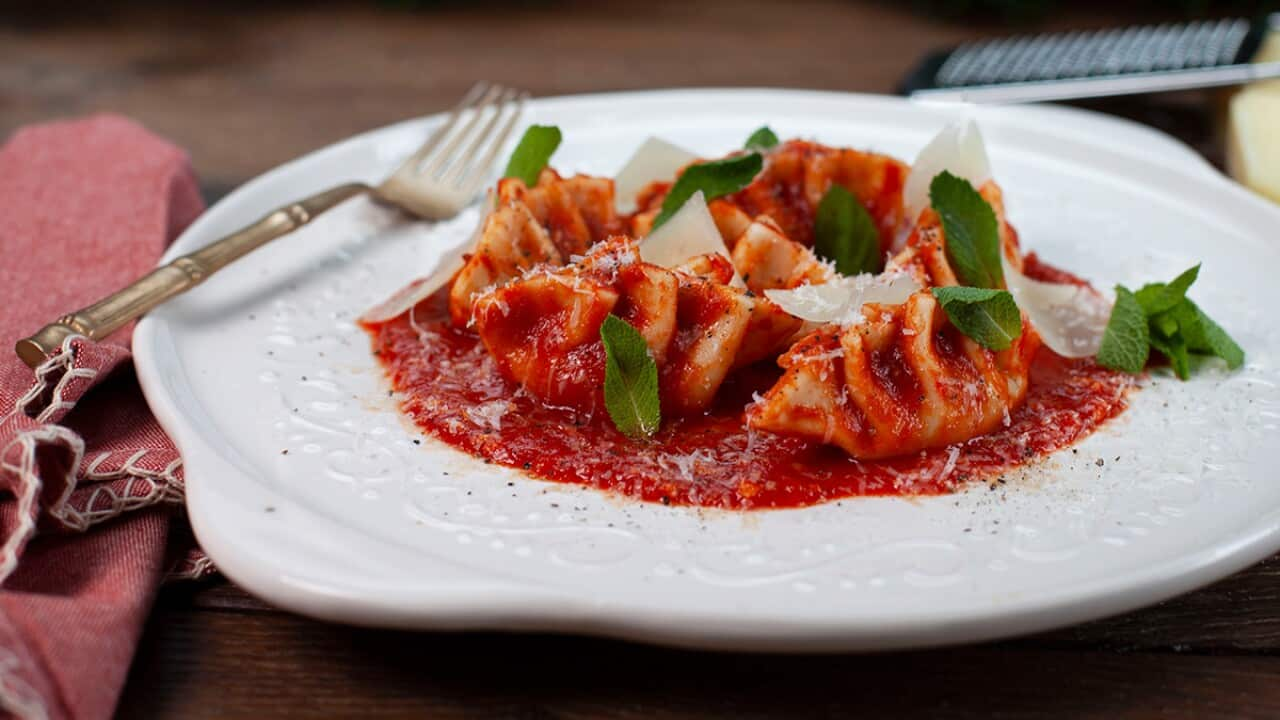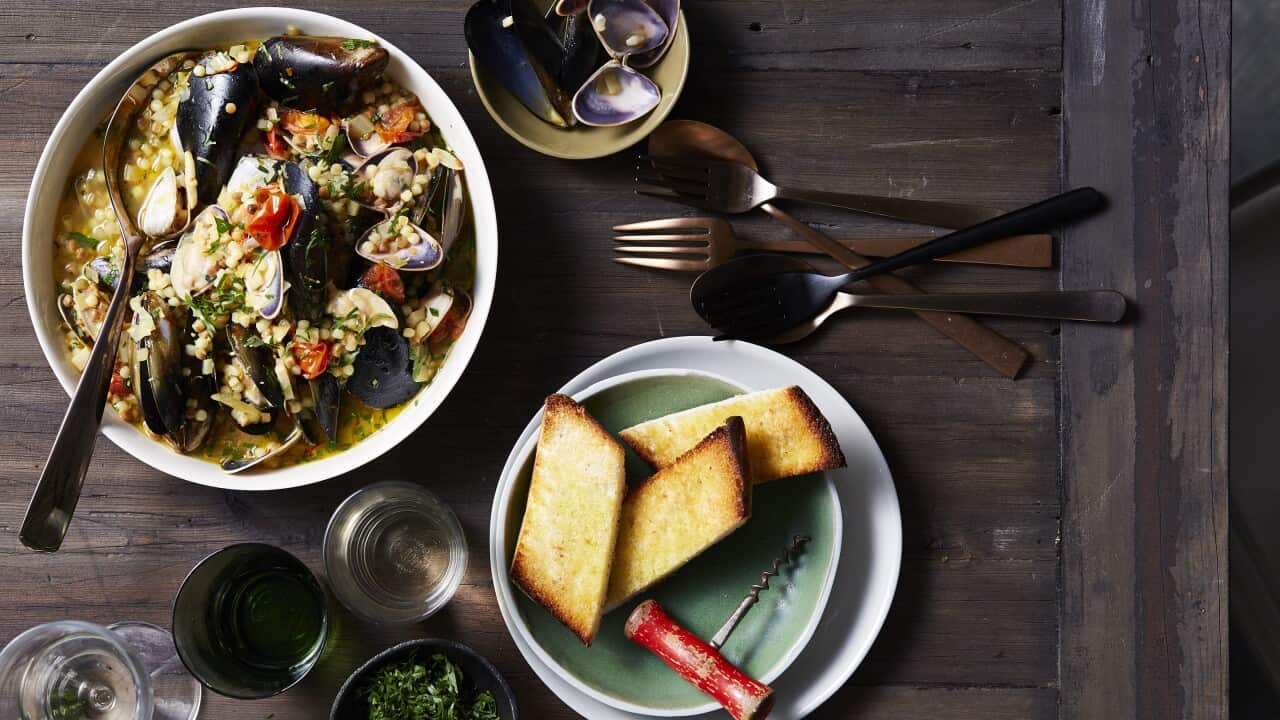Cooking and eating both have a way of transporting us to some of our fondest memories. For me, it's coffee bubbling in a Bialetti, or peeling open a milky green fig from my father's garden.
From a simple smell or flavour, a place or moment can simmer to the surface. For migrants, in particular, preparing and enjoying meals can make their homeland feel closer, the memories just as important as the way the food tastes.
After running a series of classes taught by local cooks, the in Melbourne wanted to find another way to keep their community's food and stories alive.
It collaborated with the Sardinian Association of Sydney and the Queensland Sardinian Culture Club to create (Land of Sardinia) – a cookbook featuring recipes from the Sardinian community across Australia.
For those unfamiliar with Sardinia – an island west of Italy's mainland, the cookbook provides a thorough overview of Sardinian cuisine, history and dishes.
One such food is Malloreddus, a traditional curved Sardinian pasta with ridges on the outside. I have my own memories of Nonna from Santu Lussurgiu shaping hers across raffia baskets. Other classics include culurgiones and seadas, while donkey meat with green sauce, mussels au gratin and wild artichoke thistles in oil also feature.

Artichoke fritters recipe by Mariangela Prib. (Credit: Paolismith Creative and David Mitchener) Source: Paoli Smith Creative and David Mitchener
SARDINIAN DELIGHT

Pasta stuffed with potato, cheese and mint (culurgiones)
The cookbook also celebrates people within the Australian Sardinian community and their stories.
Assunta Tilocca Mieli of Sydney, for example, shares a recipe for wild fennel with pancetta and garlic. She reflects on foraging for the beloved bulb in the inner suburb of Eveleigh in the 1970s as quality time spent with her mother.
"While we picked the wild fennel, she would also tell me stories of her home town of Illorai in the province of Sassari. When I cook this dish at home, the smell of aniseed fills the house and takes me back to my childhood."
SARDINIAN RECIPE

Sardinian flatbread
Mariangela Prib, originally from Cagliari, shares an artichoke fritters recipe inherited from her great grandmother.
Today, it is enjoyed by her grandchildren in Australia. "This is my family's favourite dish," says Mariangela.
"Years ago, it was impossible to find this variety here in Australia, so my mother planted Sardinian artichokes seeds in her vegetable garden and she was delighted when they grew successfully. I still grow them today in my garden."
When I cook this dish at home, the smell of aniseed fills the house and takes me back to my childhood.
Adapting recipes and ingredients is common for many home cooks in Australia. For Eleonora Concas from Sanluri who arrived in Australia in 2014, cooking with wild Sardinian herbs is vital. "Their perfume, flavour and taste are imbedded into Sardinian culture", she says.
Eleonora uses bay leaves, sage and rosemary to complement juniper berries in her wild boar ragu, another recipe that features in the cookbook. But not all contributors in are Sardinian, proving you don't have to be from a place to feel connected to it or the food.
But not all contributors in are Sardinian, proving you don't have to be from a place to feel connected to it or the food.

Seadas, recipe by Ausilia Palmas in Terra Sarda. (Credit: Paolismith Creative and David Mitchener) Source: Paoli Smith Creative and David Mitchener
Through her Sardinian husband of almost 25 years, Aurora Chighine from Buenos Aires has learned to cook many Sardinian dishes, including lamb with wild fennel, and suckling pig on a spit.
Australia's most famous Sardinian chefs and champions of its cuisine, Giovanni Pilu of and Pietro Porcu of in Melbourne, also contribute.
preserves Sardinian home cooking traditions in Australia not only for Sardinians but for all Australians.
It reflects the diversity of Australian food culture today.
Regardless of blood or nationality, by cooking a dish from someone else's kitchen, we have the power to keep food traditions alive and create new memories of our own.
Love the story? Follow the author here: Twitter , Facebook , Instagram .






